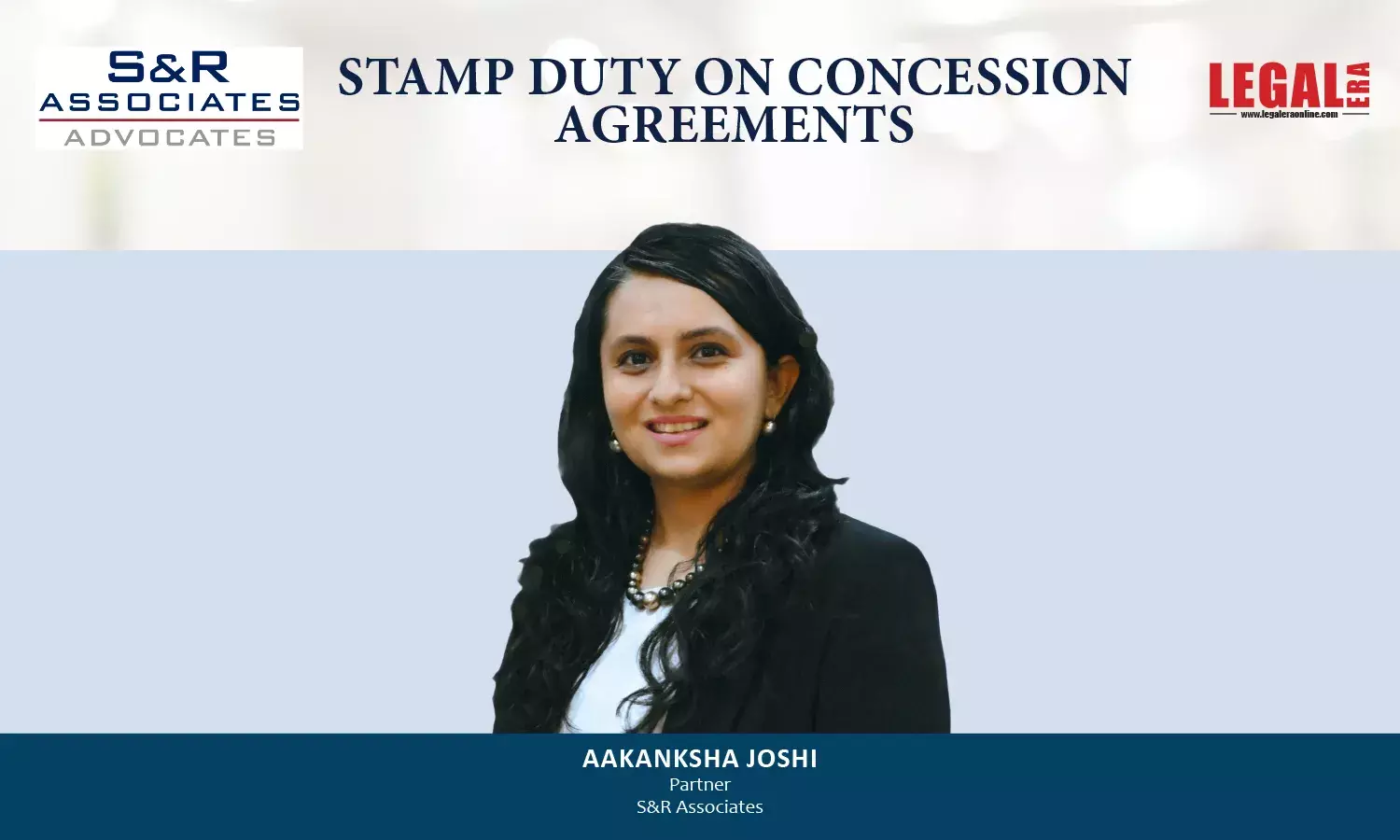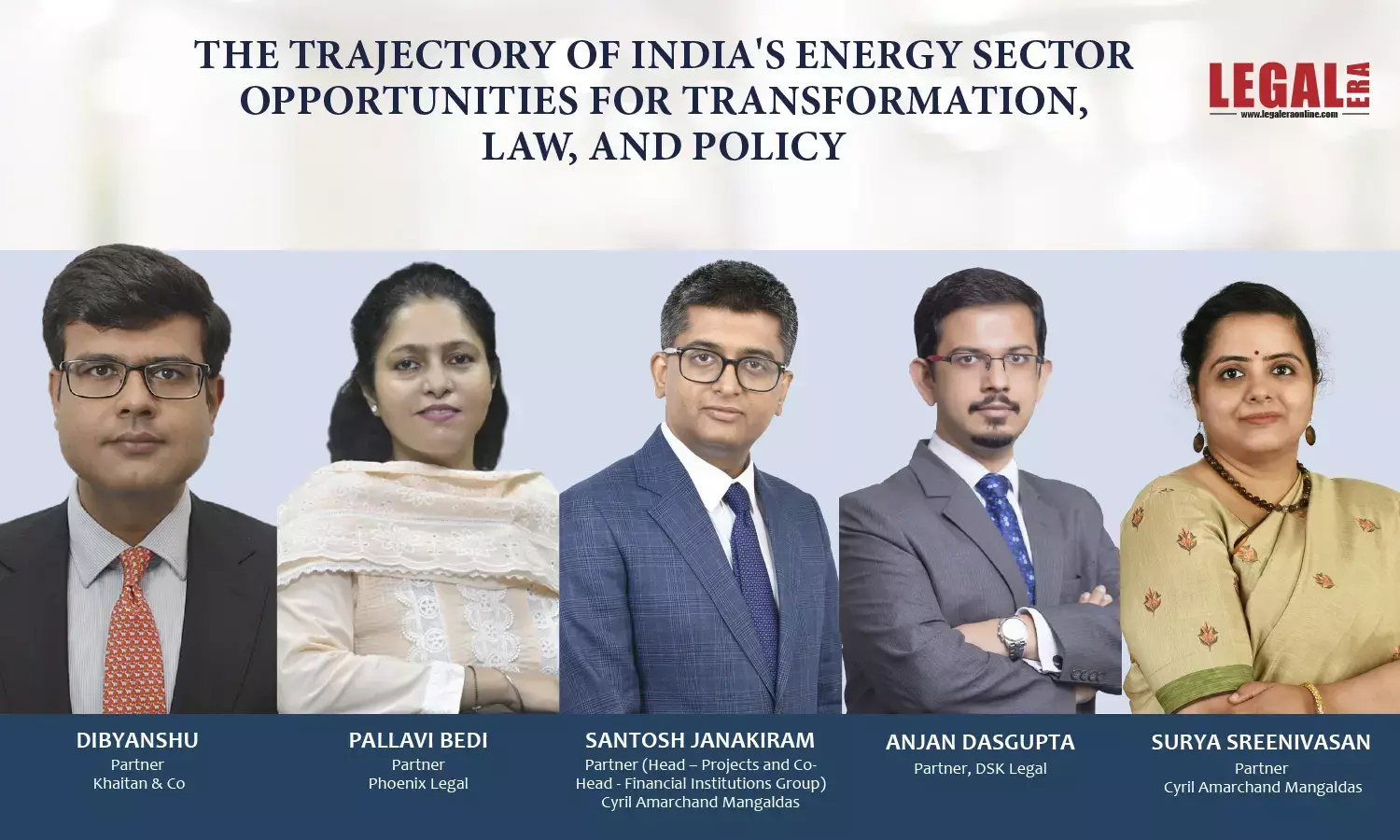Stamp Duty on Concession Agreements

Stamp Duty On Concession AgreementsThe Supreme Court of India, in its recent judgment in Rewa Tollway P. Limited v. the State of Madhya Pradesh1 (“Rewa Decision”), has upheld that a concession agreement for a road allowing the collection of toll fell within the definition of the term ‘lease’ under the Indian Stamp Act, 1899 (as applicable to the State of Madhya Pradesh) and...
Stamp Duty On Concession Agreements
The Supreme Court of India, in its recent judgment in Rewa Tollway P. Limited v. the State of Madhya Pradesh1 (“Rewa Decision”), has upheld that a concession agreement for a road allowing the collection of toll fell within the definition of the term ‘lease’ under the Indian Stamp Act, 1899 (as applicable to the State of Madhya Pradesh) and consequently, stamp duty payable on a “lease” should have been paid on such agreement. This would have a significant financial implication for the concessionaire since leases are typically chargeable with substantial ad valorem duties under State-specific stamp legislations.
The Bombay High Court had arrived on a similar conclusion in Abhijit Infrastructure Private Limited v. the Joint District Registrar and another (“Abhijit Decision”) in 2020. Questions regarding the stamp duty payable on concession agreements continue to be raised as practices across Indian States and port authorities differ.
This note analyzes the law regarding stamp duty payable on concession agreements in India and the impact that the Rewa decision could have on past and present concessions.
NATURE OF CONCESSION AGREEMENTS
Although there is no statutory definition, the term “concession” has been explained as a right conceded to a private partner for provision of a public asset and service for the purpose over a specified period on the basis of market-determined revenue streams that allow a commercial return on investment.2 This model for delivery of public services is known as public private partnership (“PPP”). PPPs stress on long-term service delivery rather than asset creation.
A review of typical concession agreements executed in India clearly shows that there is no interest created in the property underlying the concession granted by the authority. A concession is merely a license to enter upon the land, undertake certain development works for the creation, expansion or improvement of public assets and provide long-term services from such public assets. In fact, the term “concession” and “license” are used interchangeably at times in the context of these agreements. Often, a separate lease or license instrument is executed in favor of a concessionaire granting a right to use or enjoy or enter upon the underlying land for the purpose of the concession.
Concessions can be thus understood as long-term service delivery contracts that grant the concessionaire the ability to create or improve or use public assets to enable such delivery. As such, it appears difficult on the face of it to reconcile concessions with leases, that are instruments through which interest in property is transferred for a finite period of time.
ORDINARY MEANING OF LEASES AND LICENSES
A “lease” is defined under Section 105 of the Transfer of Property Act, 1882 (“Property Act”) with reference to immoveable property as a transfer of a right to enjoy such property, made for a certain time, express or implied, or in perpetuity, in consideration of a price paid or promised, or of money, a share of crops, service or any other thing of value, to be rendered periodically or on specified occasions to the transferor by the transferee, who accepts the transfer on such terms. A license is defined under Section 52 of the Easements Act, 1882 with reference to immoveable property as a right to do, or continue to do, in or upon the immovable property of the grantor, something which would, in the absence of such right, be unlawful, and such right does not amount to an easement or an interest in the property.
The fundamental distinction that can be drawn between a lease and a license is that a lease is a transfer of property while a license is a mere right to use without such transfer. Accordingly, a lessee is entitled to holding the land without interruption and is also entitled to transfer its interest in the land. A licensee cannot transfer its license. When the lessor transfers the land, the lease continues to operate. In contrast, a license abates on the transfer of the underlying land.
Based on the above, it is apparent that concessions are akin to licenses and not leases as they are ordinarily understood. A concession is non-transferable, it does not create an interest in the land and does not create a right in rem allowing a concessionaire to defend title to the land. However, a concession does involve a right to enter upon the land for a certain period in exchange for the development of an assets and/or the provision of services.
LEASES UNDER STAMP LEGISLATION
While a “lease” has been defined under the Property Act, the Indian Stamp Act, 1899 (“Stamp Act”) has a wider definition for the same term. Section 2(16) of the ISA as a lease of immoveable property and also includes (a) a patta; (b) a kabuliyat or other undertaking in writing, not being a counterpart of a lease, to cultivate, occupy, or pay or deliver rent for, immovable property; (c) any instrument by which tolls of any description are let; and (d) any writing on an application for a lease intended to signify that the application is granted. Therefore, instruments that do not strictly conform to the statutory definition of a “lease” under the Property Act are also chargeable with stamp duty as such. It is arguable that even leases of moveable property could be charged to stamp duty if they fall within the four limbs in the preceding sentence. Several states have their own stamp legislation that have similar definitions for the term “lease”, including the Maharashtra Stamp Act, 1958 (“Maharashtra Stamp Act”) and the Karnataka Stamp Act, 1957.
STAMP DUTY ON CONCESSION AGREEMENTS
The expansive definition of “lease” under the Stamp Act and other stamp legislation has now brought into its remit concession agreements as per the Rewa Decision and the Abhijit Decision.
In the Abhijit Decision, a concession was granted to the petitioner for the construction of a bridge across the Vainganga river on a ‘Build Operate Transfer’ basis, which is common model for infrastructure delivery under PPP. To enable the petitioner to recover cost, it was permitted to collect tolls. The Collector of Stamps undertook an adjudication of the concession agreement and issued a show cause notice to the petitioner as to why the concession agreement should not be stamped under Section 2(n) of the MSA (which contains a similar definition of “lease” as set out in the Stamp Act).
The petitioner contended that it was entitled to fees as notified under the National Highways Act by the Central Government. The petitioner did not have possession or control over the site.
However, the Bombay High Court held that the definitions of the term “lease” under the Property Act and the Maharashtra Stamp Act were different. It stated that the under Section 3 of the Maharashtra Stamp Act, the liability for payment stamp duty arose on the instrument as executed and not on the transaction. The Bombay High Court also considered and approved of certain other judicial decisions holding that when toll is collected for using a road or bridge, neither the road nor the bridge is leased out. It is only the right to collect toll that is leased out which right would be a "lease" for the purposes of the Stamp Act3.
Although the Rewa Decision does not refer to the Abhijit Decision, the conclusion was similar. In the Rewa Decision, the Supreme Court was also called upon to decide on the vires of an amendment to the Stamp Act as applicable to Madhya Pradesh which imposed a stamp duty of 2% on agreements to lease where the right to collect tolls is given in lieu of the amount spent by the lessee in construction of roads, bridge etc. under the Build, Operate and Transfer (B.O.T.) scheme. The Supreme Court held that while this amendment stipulated the amount of stamp duty payable on a lease, even without such entry, a concession agreement permitting toll collection would amount to a lease under Section 2(16) of the Stamp Act and be chargeable to stamp duty.
IMPLICATIONS
These decisions clarify the position on stamp duty on concession agreements permitting tolling, but also open up further questions for discussion.
The Nature of Tolls
Concessions permit the recovery of cost and a certain degree of returns through either the collection of charges from users or annuity payments from the authority or a hybrid of the two. In the Abhijit Decision, the petitioner had contended that it was entitled to fees, distinguishing it from the toll collected. Concessions for different infrastructure projects have different fee structures permitting the collection of tariffs, fares or other user charges with a requirement for sharing the collections with the public authority. There is no precise definition of the term “toll” in the context of concession agreements.
Judicially, a toll has been described as applying to any sum of money which is taken in respect of some benefit, the benefit being the temporary use of land.4 The consideration for levying tolls is some amenity, service, benefit or advantage which the person entitled to the toll undertakes to provide for the public in general or the persons liable to pay the toll.5 However, in PPP arrangements, the benefit or service being provided by the private party and the toll being collected is on behalf the public authority. Whether the private party’s appropriation is a fee paid by the public authority, or a toll collected in its own right needs further examination.
Revenue Shares
Even assuming that the toll is appropriated by the concessionaire, there is often a revenue share component i.e., a share of the toll collected is to be paid to the public authority. In such case, the question is whether the entire toll collected should be used for determining the stamp duty or whether the revenue share should be deducted.
Computation of Stamp Duty
As mentioned above, concessions that permit collection of tolls are to be considered as leases. As a corollary, the concessionaire would be considered as the lessee. Under the Stamp Act, stamp duty is payable based on the annual rent or the premium payable by the lessee. Whether this would imply that the project cost be considered as the rent or premium needs consideration. Under the Maharashtra Stamp Act, stamp duty is payable on the basis of the market value of the property. The term “market value” has been defined in the Maharashtra Stamp Act as being the price which such property would have fetched if sold in open market on the date of execution of such instrument or the consideration stated in the instrument, whichever is higher. For immoveable property underlying a concession, market value determined on such terms may be an inappropriate metric.
Annuities
Since the definitions of “lease” under the various stamp legislation only take into account the ability to toll, it follows that concessions where only annuities are paid should not be considered as leases. While there is a clear argument for this position, questions may arise as to how hybrid annuity contracts should be stamped or whether annuities may be likened to a toll.
Registration Requirements
Under Section 17(d) of the Registration Act, 1908 (“Registration Act”), leases of immoveable property are compulsorily registrable. The definition of “lease” under the Registration Act differs from that under the Stamp Act and is defined to include a counterpart, kabuliyat, and undertaking to cultivate or occupy, and an agreement to lease. Considering that the definition is inclusive, it is unclear whether tolling arrangements should be considered as leases for the purpose of the Registration Act. Since the specific language is absent in the Registration Act, it is arguable that registration of concession agreements is not required. As a matter of practice, concession agreements are not registered under the Registration Act.
Prior Concessions
The PPP model has been in vogue in India since 1991 and the BOT toll model has been commonly used across infrastructure sectors. In addition, tolling contracts without construction obligations have also made their place in the infrastructure ecosystem. Unstamped concession agreements permitting tolling may be inadmissible as evidence unless the deficit stamp duty along with substantial penalties under the relevant stamp legislation are paid. Further unstamped concession agreements are liable to be impounded by the relevant authorities. This could affect the ability of parties to a concession agreement to seek dispute resolution whether through court process or through arbitration.
Separate Leases and Licenses
In certain concessions, separate leases or licenses are executed in relation to the site. Such leases and licenses require the concessionaire to pay premium and periodic rent for the term of the concession. It is a principle of stamp legislation that the liability for payment of stamp duty arises on the instrument and not the transaction. The question therefore arises as to whether a concessionaire would have to pay stamp duty twice considering that each of the documents constitutes a separate lease instrument.
Liability of the Government
Stamp duty is not payable in case of instruments which for such exemption would have to be stamped by the Government or where the Government has undertaken to bear such liability. The State-specific stamp legislations do not contain any specific definitions of the “government” leaving it open to debate as to whether port authorities could be considered within its ambit. In any case, many concession agreements are silent as to who would be liable to bear the stamp duty and hence availing such exemptions may prove difficult.
Impact on Costs
The Rewa Decision is likely to have a far-reaching impact on concessioning in India. Long-term leases that are usually chargeable with high amounts of stamp duty could substantially impact project costs. Such costs are unlikely to be considered as capital costs recoverable on termination or expiry of concession agreements as termination payments.
CONCLUSION
The Rewa Decision has authoritatively laid to rest any controversy around the liability for payment of stamp duty on concession agreements. Going forward, infrastructure developers should factor the stamp duty implications while bidding for projects involving a concession. Additionally, they should also factor the practical issues discussed above that may be relevant on a case-specific basis.
2. Report of the Committee of Revisiting and Revitalizing Public Private Partnership Model of Infrastructure headed by Mr. Vijay Kelkar issued by the Department of Economic Affairs, Ministry of Finance in November 2015.
3. Banney Khan v. Chief Inspector Stamp AIR 1976 All 475; Uppalapati Durga Prasad v. Executive Engineer (R & B) (2001) 4 Andh LT 228; Uttarakhand and ors. v. Harpal Singh Rawat (2011) 4 SCC 575.
4. Sitaram Maharaj v. Janapada Sabha AIR 1952 Nag 40.
5. Hindustan Vanaspati Manufacturing Co. Ltd. v. Municipal Board, AIR 1962 All 24, 40.






